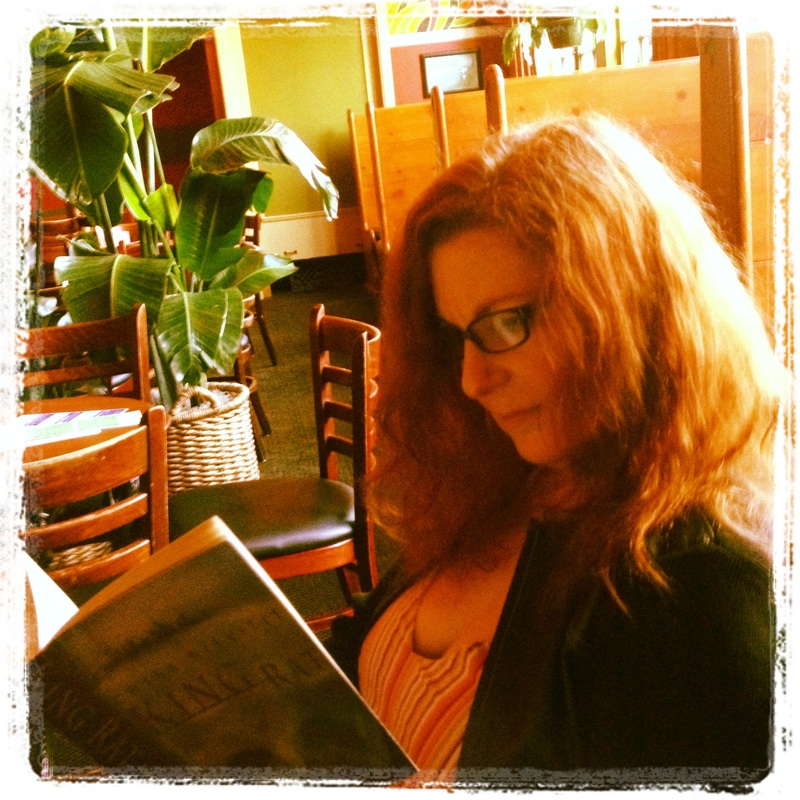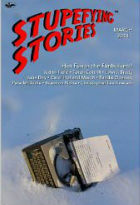A good friend insisted that I needed a place to write, that sitting on the corner of the couch or at the kitchen table (trying to ignore the sound of the kids' movies) wasn't going to tempt me to write my 500 words a day. And he followed his advice with a gift: an "antique" desk that I'd admired on craigslist. When he went to look at the desk, he found himself deep in transplanted Appalachia, negotiating with a canny Scots-Irish woman with many more children than hands and lots of home protection (wait while I put the dogs away, 'cause they *will* bite you). There was a reason the canny woman's craigslist photo of her desk was so dark, and it wasn't because she didn't know how to operate the flash. But I'd said that it reminded me of a piece of my grandmother's furniture, and my friend decided that the Appalachian desk might have potential. So he brought it to me.
Today, I started the desk refinishing project, and have become more familiar with the Appalachian desk. It does have potential. It has the lightness, the restrained curves, the Federal-style hardware of furniture that predates the heavy ugliness of the 50s. But, from the stories that I have gotten from my own family, I know that most of the families in Virginia (where my stories come from) couldn't afford to buy anything new in the 30s and early 40s, so I am guessing that the desk was made in the late 40s. It was well made, when it was made, but as I worked on it, I began to sympathize with the desk. Poor thing, it was beautiful and new once, but its fate took it further and further away from the place where it was valued and displayed. Like an abused pet, it revealed its history as I cared for it. As I oiled and conditioned the body of the desk, I found crusted dirt and petrified tape, ancient drips of wax, damage to the apron between the front legs so deep that I can't imagine what could have made it. I imagine a fireplace poker, point jammed in the floor far under the desk, then whacked up as hard as young arms can yank, repeatedly. After a lot of conditioning and scraping, I think the body of the desk can be saved without refinishing. Refinishing will take away the interesting differences in color that the various parts of the desk have, now, the body a slightly darker color than the drawers, everything with a depth of color that I won't be able to replicate with a stain. But the top. oh.....
The top of the desk is another matter. It can't be saved, the way it is. So the next step of my project was to plug in the hand sander and strip the surface down past the finish. As I sanded, the damage revealed itself in layers. Past the surface scratches and the deep dents in the edges, I found a constellation of deep, deep indentations: a pen, or an ice pick, chopped down over and over again, maybe to see if it could go deep enough to stand on its own. A chiaroscuro of cigarette burns. Deep parallel scratches probably caused by a cat's back claws as it tried to get someplace other than the desk as quickly as possible. I worked the sander, half-deaf and covered in sawdust, imaging the desk fallen from its place of purpose into some side room full of large plastic toys and a litter box and discarded sports equipment, being used by the indeterminate number of Appalachian offspring as a target for their darts and whittling and whacking-with-a-stick practice. I can only hope that the cigarette burns were inflicted by some older Appalachians.
And so, slowly, patiently, I sand the damage away, fill in the gouges with wood putty, use the sandpaper to reshape the mutilated corners. The work is tactile; I touch the surface of the desk, feel the grain of the exposed wood, gauge how far I can risk sanding the worst damage. I scrape at the stains and accumulated dirt with a razorblade, with my fingernails, run my hands across the finish to feel if I've missed something. And as I touch this desk, this dead wood, it has a life for me. And I promise this inanimate object that it will have a home with me, where it will not be whacked with sticks by ill-mannered children and burnt by inattention, reduced to near-kindling by those who care only for new things. I will stain and refinish it, make it new but not too new, move it to a place that feels right, find a chair of just the right height, and make this desk the place where I write. It will have a purpose, and an importance in my house, and it will be saved from decay in some garage or an inglorious end in some backyard bonfire, and maybe in another few decades one of my children will treasure it as Mommy's Writing Desk.















 RSS Feed
RSS Feed
